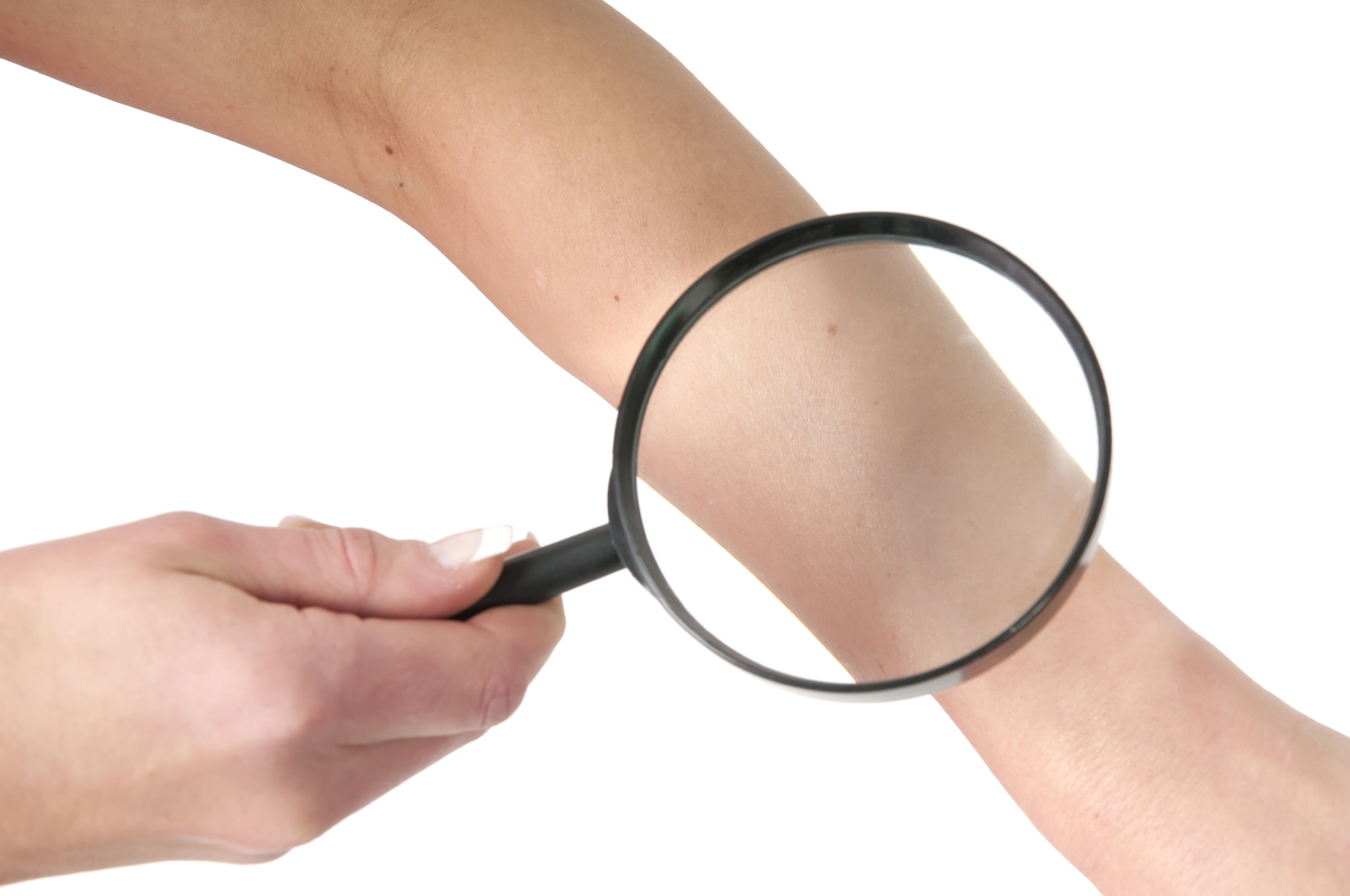Want to know if you’re at risk for skin cancer? New research shows that you can tell just by looking at your right arm.
Skin cancer is the most common of all cancers, with 3.5 million cases a year in the U.S. Almost 74,000 Americans get diagnosed each year with the deadliest type, melanoma. Some 10,000 die from it annually and the numbers are growing.1
Doctors often repeat the conventional wisdom that sun exposure causes skin cancer. But unless the exposure causes sunburn, there is little risk. The real danger comes from sunburns. That what triggers deadly melanoma.2
And cancer can emerge decades after sunburns have occurred.
Are you are risk? Here’s how to tell.
A new study published in the British Journal of Dermatology shows that the number of moles on your right arm is a good indicator of your cancer risk.3
More than 11 moles on your arm indicates a significantly higher-than-average chance of getting melanomas or other skin cancers.
To check yourself, you need to know the difference between a mole and a freckle.4
Freckles are small, flat, and usually pale brown. They are not present at birth and are often temporary.
Moles are usually darker than freckles and can be present at birth. They can be raised or flat and often become more prominent with age. Moles don’t disappear.
Note: Researchers chose the right arm over the left arm for consistency in their study. But it is likely that moles on the left arm are equally predictive of cancer.
If you count more than 11 moles on your arm, it does not mean you are doomed to get cancer. There are simple steps you can take to lower your chances:
- Don’t get sunburned. This means taking sensible precautions such as wearing a hat and other protective clothing.
- Use natural sunscreens. Chemical sunscreens do little to protect you from cancer, according to studies. One common commercial sunscreen ingredient, oxybenzone, is linked to allergies, hormonal problems, and cell damage. Instead, use safe, natural products.
Surprisingly, some household cooking oils can protect you. Coconut oil has an SPF of 4-6 and almond oil around 5. Some other oils work even better. Raspberry seed oil has an SPF of 25-30 and carrot seed oil 35-40. They are available at health food stores or online.5
Badger brand sunscreen is one commercial product that includes natural ingredients. It uses “non-nano” zinc oxide as the sun blocker. This means the particles are not small enough to pass into your bloodstream where they could do harm. Badger gets the highest scores for safety from the Environmental Working Group.
- Take a vitamin D3 supplement. You can get all the vitamin D you need by getting plenty of sunlight. But for those at higher risk for skin cancer, taking a supplement may be safer than the sun. Take 5,000 IUs of D3 a day. Vitamin D lowers risk for basal cell skin cancer, according to researchers. 6
- Drink coffee. Researchers have found that for each daily cup of coffee you drink, there’s a 5% drop in your odds of getting non-melanoma skin cancer. 7
- Never use a tanning bed. Studies show they dramatically increase cancer risk.
If you do get sun burned, be sure to completely avoid the sun until you’re healed. Further exposure greatly damages your skin’s ability to naturally protect itself from cancer.
In Good Health,

Angela Salerno
Publisher, INH Health Watch
Like this Article? Forward this article here or Share on Facebook.
References:
1http://www.cancer.org/cancer/cancercauses/sunanduvexposure/skin-cancer-facts
2http://www.ncbi.nlm.nih.gov/pmc/articles/PMC2873840/
3http://onlinelibrary.wiley.com/doi/10.1111/bjd.14216/abstract
4http://www.riversideonline.com/health_reference/Questions-Answers/AN00399.cfm
5http://wellnessmama.com/2558/homemade-sunscreen/
6http://www.cancer.org/research/acsresearchupdates/skincancer/vitamin-d-holds-skin-cancer-drug-potential
7http://www.webmd.com/melanoma-skin-cancer/features/12-ways-protect-skin-cancer

